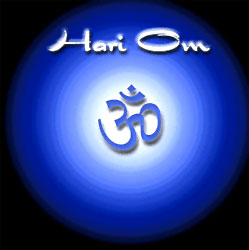A mantra is divinity wrapped within a rhythmic structure. It is divine power or Daivi Shakti manifesting in a sound body. The mantra is the God itself. The sacrosanct Mantra or the Divine Name is an essential symbol of Supreme Divinity. It is the divine communion to the sages of self-realization who were present in the Vedic and Upanishadic times. Mantras help to gain access to the transcendental realms of absolute experience. By reciting the Mantra the Jiva or the individual soul attains freedom from sin, enjoyment in heaven and liberation from the cycle of birth and death. It also helps to attin the four fold fruit i.e. Chaturvarga, which are Dharma, Artha, Kama and Moksha. Mantra is a compound term where the first syllable of the word `Man` means `to think` and `Trai` means to `protect` or `free` from the worldly bondage. It is the combination of Man and Tra that the word Mantra is formed.
 Mantra in japa yoga plays an important part, as mantra is an absolute science. In Hinduism, mantra has six parts. It has got a Rishi (a man of Self realization) who revealed the Mantra to the world for the first time. He is the Drashtra or the Seer for this Mantra. For instance, Sage Viswamitra is the Rishi for the Gayatri. Secondly, the Mantra has a metre (Chhandas), which governs the modulation of the voice. Thirdly, the Mantra refers to a particular Devata or super natural being. This Devata or God is the essence of the Mantra. Fourthly, the Mantra has got a Bija or seed. The seed is the keyword or a series of words, which gives strength to the mantra. Fifthly, every mantra has got power or Shakti. The Shakti is the energy of the Mantra that is the reverberation forms set by the sound of the mantra. This sound aids in the communion of human beings with the Almighty, which is worshipped. Lastly, the Mantra has a Kilaka- pillar or pin. This plugs the consciousness or the Mantra Chaitanya that is hidden in the Mantra. As soon as the plug is removed by constantly repeating the name of the Supreme Divinity, the Chaitanya or the consciousness that is hidden is revealed. The devotee gets to see the Ishta Devata.
Mantra in japa yoga plays an important part, as mantra is an absolute science. In Hinduism, mantra has six parts. It has got a Rishi (a man of Self realization) who revealed the Mantra to the world for the first time. He is the Drashtra or the Seer for this Mantra. For instance, Sage Viswamitra is the Rishi for the Gayatri. Secondly, the Mantra has a metre (Chhandas), which governs the modulation of the voice. Thirdly, the Mantra refers to a particular Devata or super natural being. This Devata or God is the essence of the Mantra. Fourthly, the Mantra has got a Bija or seed. The seed is the keyword or a series of words, which gives strength to the mantra. Fifthly, every mantra has got power or Shakti. The Shakti is the energy of the Mantra that is the reverberation forms set by the sound of the mantra. This sound aids in the communion of human beings with the Almighty, which is worshipped. Lastly, the Mantra has a Kilaka- pillar or pin. This plugs the consciousness or the Mantra Chaitanya that is hidden in the Mantra. As soon as the plug is removed by constantly repeating the name of the Supreme Divinity, the Chaitanya or the consciousness that is hidden is revealed. The devotee gets to see the Ishta Devata.
There is something divine about the Mantra, which is the sound. Each sound is melodious in its own way and produces a form in the indivisible world. A combination of sound create complicated shapes and by repeating the Mantra a divine mystifying power comes in to being which brings about the manifestation of the Supreme Divinity. When a particular Mantra is repeated properly with faith and devotion, it creates a certain vibrations. For instance by repeating the Panchakshara Mantra- Om Namo Sivaya produces the form of Lord Shiva and the repetition of the Om Namo Narayanaya, the Ashtakshara Mantra of Vishnu produces the form of Vishnu.
In japayoga if the name of God is recited correctly or incorrectly, knowingly or unknowingly it will give positive results. This is so because the quality of goodness is inherent in a mantra and it also has the strength of destroying sins from the very roots. When sins are destroyed it results in the communion of the devotee with the Lord through Bhava -Samadhi. Mantra is all about reciting the glory of God, which cannot be established through reasoning and intellect. It can come only through devotion, faith and by constantly repeating the Name.
Mantra in Japayoga is the very rudiment. There is Shakti or power in every word or Mantra. God is the completion or fullness of existence and therefore his name can achieve anything. Just as the name of a thing generates the consciousness of that thing, the Name of God generates the consciousness of God in the mind and this becomes the reason for the realization of the Highest Perfection or God.




















